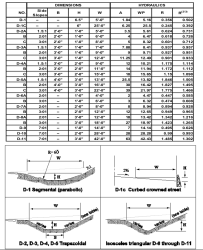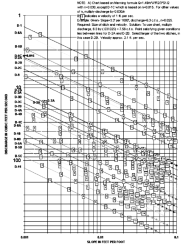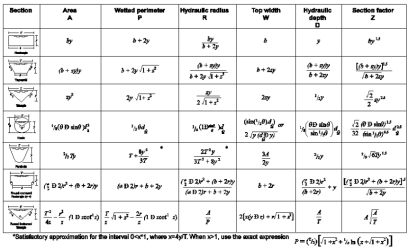4.6.3 Design Criteria
General
-
Open channels shall be designed to provide required conveyance capacity and bank stability while allowing for aesthetics, habitat preservation, and enhancement.
-
An access easement for maintenance is required along all constructed channels located on private property. Required easement widths are listed in Vol II–4.3.3 Easement and Setback Requirements.
-
Channel cross-section geometry shall be trapezoidal, triangular, parabolic, or segmental as shown in Figure II-4.11 through Figure II-4.13. Side slopes shall be no steeper than 3H:1V for vegetation-lined channels and 2H:1V for rock-lined channels.
-
Vegetation-lined channels shall have bottom slope gradients of 6% or less and a maximum velocity at design flow of 5 fps (see Table II-4.5).
-
Rock-lined channels or bank stabilization of natural channels shall be used when design flow velocities exceed 5 fps. Rock stabilization shall be in accordance with Table II-4.5 or stabilized with bioengineering methods as described in Vol II–1.0.1 Design Criteria.
-
Open channels shall be designed to provide sufficient freeboard so as to not saturate any adjacent road base when conveying the design flow. A minimum of 1 foot of freeboard is recommended, but in no case shall channel freeboard be less than 0.5 foot.
Figure II-4.11. Ditches – Common Sections.
Figure II-4.12. Drainage Ditches – Common Sections.
Figure II-4.13. Geometric Elements of Common Sections.
Riprap Design
When riprap is set, stones are placed on the channel sides and bottom to protect the underlying material from being eroded. Proper riprap design requires the determination of the median size of stone, the thickness of the riprap layer, the gradation of stone sizes, and the selection of angular stones that will interlock when placed. See Appendix F for further guidance on riprap and riprap filter design.


